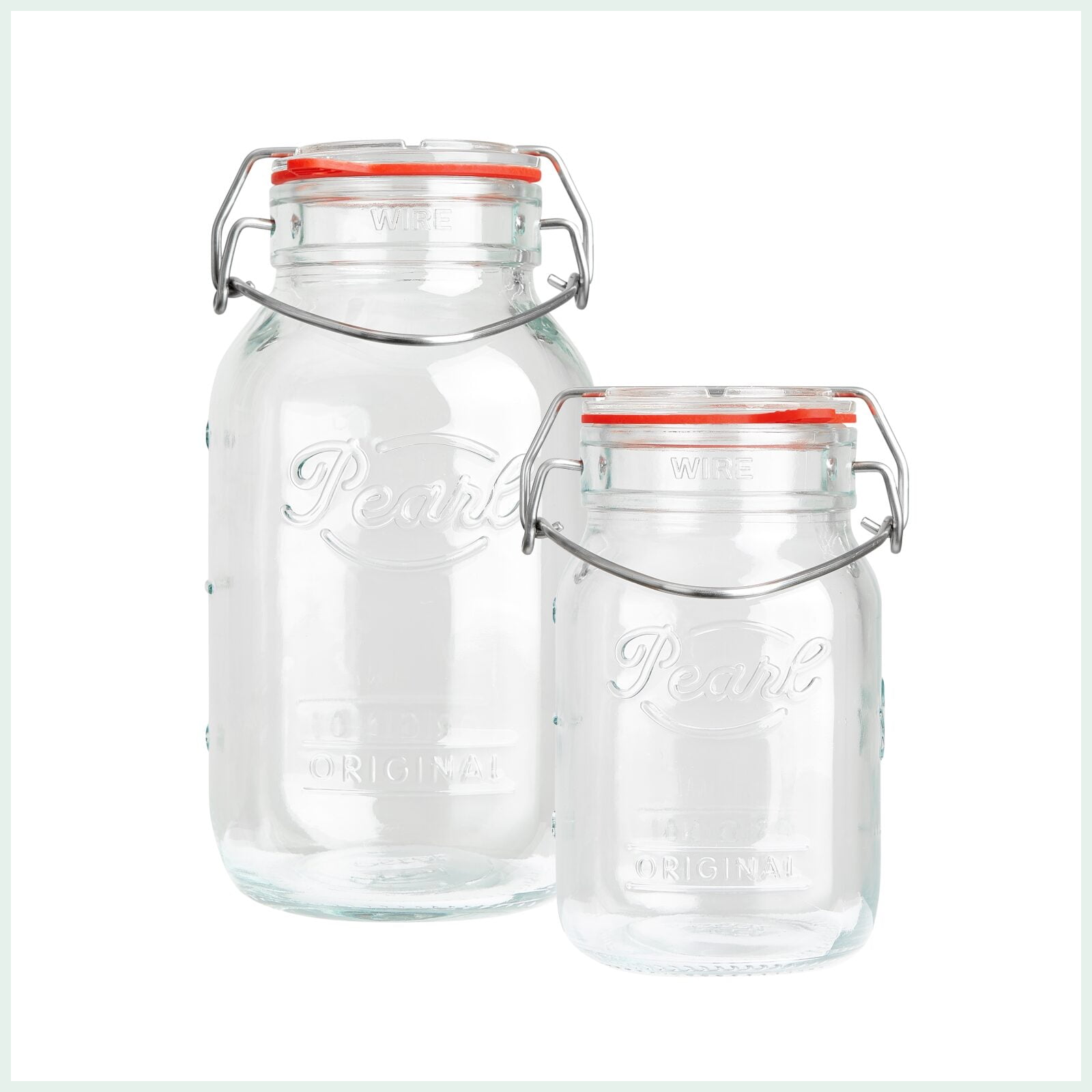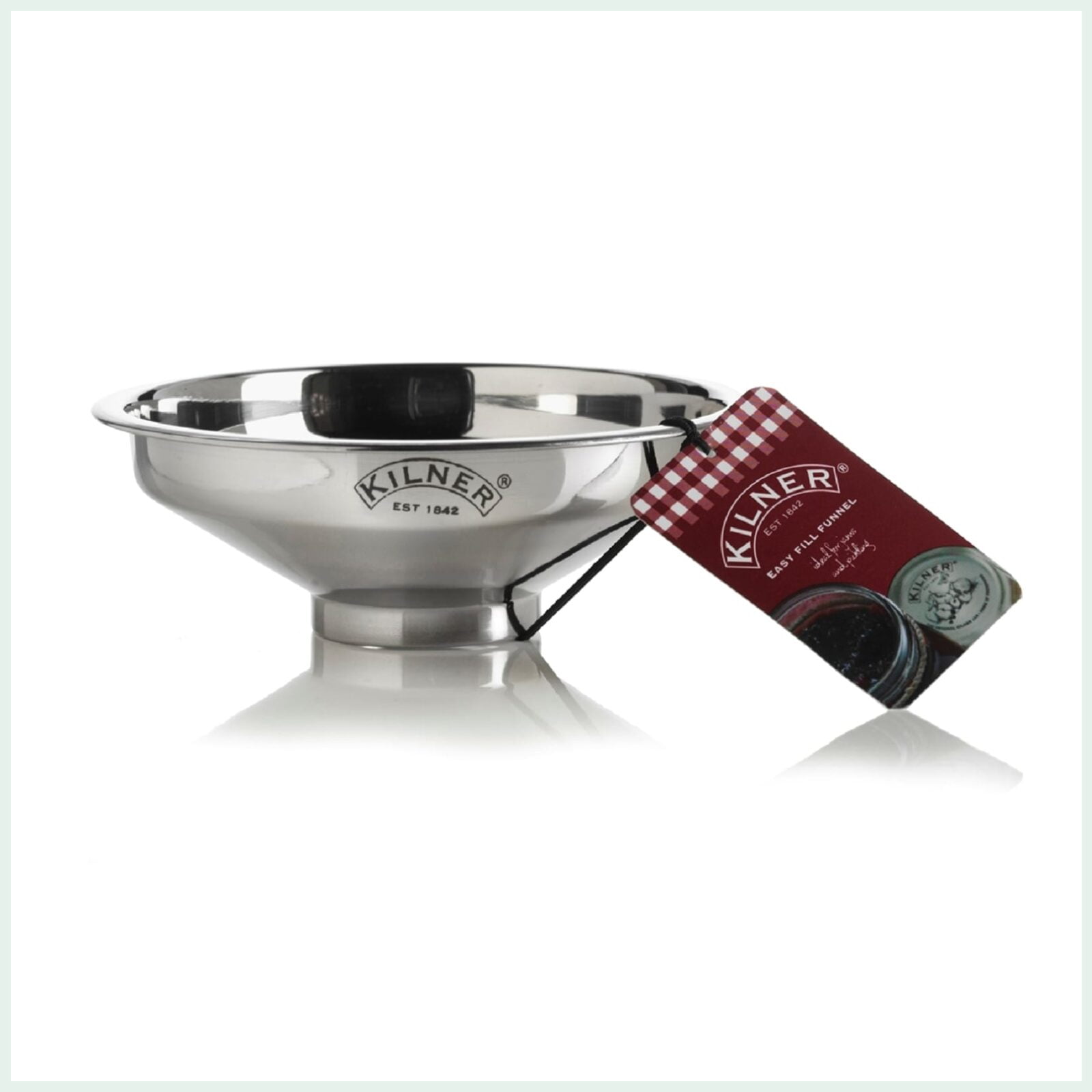No products in the cart.
Recipes for Vinegar Pickles
Spicy Pickled Shallots Recipe with Cider Vinegar
This wonderfully sharp and spicy pickled shallots recipe is a little more exotic than traditional British pickled onions and oh so good…
These pickled shallots are by far my favourite pickled anything. They are made with a little less sugar than most pickled onion or shallots and so are a good deal sharper. The spice mix, which includes mace blades and allspice berries, is to die for. Chili peppers adds a wonderful extra kick. Fortunately our spicy pickled shallots recipe with cider vinegar is pretty easy to prepare, the only problem is you can never seem to make enough…
Pickled Shallots Ingredients

Small shallots suitable for pickling can be sourced all year round. It is, however, much cheaper to buy 4kg bags of round pickling shallots in season. They usually appear on market stalls and greengrocers towards the end of September and are available until just after Christmas.
Makes five 1 litre jars.
4kg bag pickling shallots.
250g fine sea salt. Avoid using table salt as it can cause discoloration.
2.5 litres cider vinegar. If using vinegar you have brewed yourself ensure it is at least 0.5% acidity.
500g granulated sugar.
80g ginger root.
2 tbsp yellow mustard seed.
2 tbsp allspice berries
1 tbsp black pepper corns.
6 blades of mace.
2 large cinnamon sticks.
6 dried chilies (optional).
8 bay leaves.
Pickled Shallots Method
This pickled shallots recipe is made over two days. On the first day the vinegar is infused with spices and the shallots are peeled and salted. Having been left overnight the final preparation is completed on day two.
Preparing the Spiced Vinegar
Pour the vinegar in a sauce pan and gently heat while adding the sugar. Stir until the sugar is dissolved.
Give the ginger a quick bash with a rolling pin. Add the ginger and all the spices except the bay leaves to the vinegar and very slowly bring to a simmer with the lid on. At this point turn off the heat and allow the spices to infuse into the vinegar overnight.
The following day filter the vinegar through muslin or cheese cloth.
Peeling the Shallots.
Topping, tailing and then heating the shallots in boiling water will help loosen their skins and make them much easier to peel. Skinning four kilograms of shallots can take some time.
Use sharp scissors or a sharp knife to top and tail the shallots, don’t be too shy in how much you remove but don’t take off so much the shallots loose their integrity.
Select a stock pot large enough to contain all your shallots. Fill 3⁄4 with water and place on your hob. When it comes to the boil carefully transfer to your sink. Tip in the shallots and start a timer. At the end of 20 seconds rapidly douse the stock pot with cold water from the tap, allowing it to overflow until the remaining water is cold.
Strain the shallots and begin peeling them right away. Discard any bad shallots or cut away bruised or damaged areas. The shallots may simply pop out of the outer layers when squeezed hard. Try to remove all the thin membranes that are found between each layer as it will make the vinegar go cloudy in the jars.
Brining the Shallots with Salt

Lay the peeled shallots out on a large plastic or stainless steel tray and sprinkle over the salt. Cover with a tea towel and leave overnight or for up to 12 hours but no longer.
Rinse the shallots in a colander to remove the salty brine. Cut off any areas of shallots that were discoloured during the brining and remove any remaining membranes. Allow to drain.
Preparing and Filling the Jars
You will need 5 x 1 litre jars or a combination of jars adding up to 5 litres. Any jar with a tight fitting seal will do the job. For this pickled shallots in cider vinegar recipeI’m using the wonderful Mariposa preserve jars from Pearl which feature a glass lid, unique wire closure and reusable seals.
Ensure that your jars and lids are well sanitised. Jars can be placed in a cold oven and brought to 130oC for 20 minutes. Lids and seals can be boiled in water for 20 minutes. Allow the jars to cool in the oven until they can be safely handled but are still warm. Bear in mind that pouring hot vinegar into cold jars may crack them.
While waiting for the jars to santitise get the spiced vinegar back on a the hob and hold at a simmer with the lid on.
Fill the jars with onions, pack them tightly leaving around 2cm of head space at the top of the jars. As you fill place two bay leaves in each jar.
Using a jar funnel ladle the hot vinegar into the jars, cleaning the rim and then sealing each one as you go along.
Storing and Eating Your Pickled Shallots

These pickled shallots need a month or so before they are ready to eat. They will store well for over a year in a cool shady place. Once open keep your pickled shallots in the refrigerator and, in the unlikely event they last that long, consume within a fortnight.

Americans may well ask if it is safe to store pickled shallots this way without canning the jars first. One of the most important features of a good pickled shallot is the crunch. No one wants a soft onion and unfortunately canning is incompatible with maintaining the desired texture. We’ve been doing it like this in the UK for generations, fortunately pickling this way in a near 100% vinegar brine is very safe.




